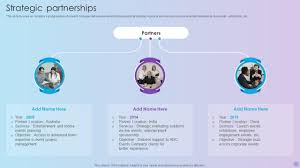The Power of Innovations: Shaping the Future
Innovations have always been at the forefront of human progress, driving change and shaping the world we live in. From the invention of the wheel to the development of artificial intelligence, innovations have transformed societies, economies, and industries.
One of the key characteristics of innovations is their ability to solve problems and meet evolving needs. Whether it’s through technological advancements, new processes, or creative ideas, innovations have the power to revolutionize how we live, work, and interact with one another.
Moreover, innovations often spark further creativity and exploration. A single groundbreaking innovation can lead to a cascade of new ideas and developments that push boundaries and expand possibilities. This ripple effect fuels continuous growth and improvement across various fields.
Innovations also play a crucial role in driving economic growth and competitiveness. Companies that embrace innovation are more likely to stay ahead of the curve, adapt to changing market dynamics, and create products or services that resonate with consumers. In today’s fast-paced world, staying innovative is often a key factor in long-term success.
Furthermore, innovations have the potential to address pressing global challenges such as climate change, healthcare access, poverty alleviation, and more. By thinking outside the box and pushing traditional boundaries, innovators can develop sustainable solutions that benefit not only individuals but also society as a whole.
As we look towards the future, it is clear that innovations will continue to play a pivotal role in shaping our world. Embracing creativity, fostering collaboration, and supporting a culture of innovation are essential steps towards building a brighter tomorrow for generations to come.
Unlocking Progress: 8 Key Questions Explored on the Role and Impact of Innovation
- What is innovation and why is it important?
- How does innovation drive economic growth?
- What are examples of successful innovations?
- What role does technology play in fostering innovation?
- How can companies foster a culture of innovation?
- What are the benefits of investing in research and development for innovation?
- How do innovations impact society and everyday life?
- What are the challenges faced by innovators in bringing new ideas to market?
What is innovation and why is it important?
Innovation is the process of introducing new ideas, methods, or products that bring about positive change and advancement in various aspects of society. It is important because innovation drives progress, fuels economic growth, and fosters creativity. By constantly pushing boundaries and challenging the status quo, innovation leads to improved efficiency, enhanced quality of life, and the development of solutions to complex challenges. Embracing innovation allows individuals, organizations, and societies to stay relevant in a rapidly evolving world, driving competitiveness and shaping a better future for all.
How does innovation drive economic growth?
Innovation is a powerful driver of economic growth by fostering creativity, efficiency, and competitiveness within industries. When companies invest in research and development to create new products, services, or processes, they not only stay ahead of the curve but also open up new markets and opportunities for expansion. By continuously innovating, businesses can increase productivity, reduce costs, and improve the quality of goods and services offered to consumers. This cycle of innovation leads to job creation, increased investment, and overall economic prosperity as industries evolve and adapt to changing demands in the global marketplace.
What are examples of successful innovations?
Successful innovations have permeated various aspects of our lives, leaving a lasting impact on how we work, communicate, and even think. Examples abound, from the revolutionary introduction of smartphones that transformed how we connect with the world to the development of electric vehicles that are reshaping the automotive industry towards sustainability. Other notable examples include online streaming services that have revolutionized entertainment consumption, and advancements in renewable energy technologies that are paving the way for a greener future. These successful innovations not only meet existing needs but also anticipate and create new possibilities, showcasing the transformative power of human creativity and ingenuity.
What role does technology play in fostering innovation?
Technology plays a pivotal role in fostering innovation by providing the tools, resources, and platforms that enable individuals and organizations to explore new ideas, develop groundbreaking solutions, and bring them to fruition. From advanced software applications to cutting-edge hardware devices, technology empowers innovators to streamline processes, enhance collaboration, and push the boundaries of what is possible. By leveraging technology effectively, innovators can overcome challenges, accelerate progress, and create transformative change across various industries and sectors. In essence, technology serves as a catalyst for innovation, driving continuous growth and shaping the future of our increasingly interconnected world.
How can companies foster a culture of innovation?
To foster a culture of innovation within companies, it is essential to create an environment that encourages creativity, experimentation, and risk-taking. Companies can achieve this by promoting open communication channels where employees feel empowered to share their ideas and insights without fear of judgment. Encouraging cross-functional collaboration and providing resources for professional development and training can also nurture a culture of innovation. Additionally, recognizing and rewarding innovative thinking and celebrating both successes and failures as learning opportunities can further inspire employees to think outside the box and drive continuous improvement within the organization.
What are the benefits of investing in research and development for innovation?
Investing in research and development for innovation yields a multitude of benefits across various sectors. Firstly, it drives technological advancements, leading to the creation of cutting-edge products and services that can revolutionize industries and enhance competitiveness. Additionally, it fosters a culture of continuous improvement, encouraging experimentation and creativity to solve complex challenges. Research and development investments also stimulate economic growth by generating new opportunities for job creation and attracting investment. Furthermore, by investing in innovation, organizations can stay ahead of market trends, adapt to changing consumer needs, and establish themselves as leaders in their respective fields. Ultimately, the benefits of investing in research and development for innovation extend far beyond immediate gains, laying the foundation for long-term success and sustainable progress.
How do innovations impact society and everyday life?
Innovations have a profound impact on society and everyday life by driving progress, shaping behaviors, and transforming the way we live and interact with the world around us. From technological advancements that improve efficiency and convenience to social innovations that address pressing issues like healthcare and education, innovations play a crucial role in enhancing quality of life, fostering economic growth, and promoting positive change. By introducing new ideas, products, and services, innovations have the power to revolutionize industries, create new opportunities, and ultimately contribute to a more dynamic and interconnected global community.
What are the challenges faced by innovators in bringing new ideas to market?
Innovators face a myriad of challenges when bringing new ideas to market. One significant hurdle is securing adequate funding and resources to develop and scale their innovations. Additionally, navigating complex regulatory frameworks and intellectual property rights can pose obstacles to the successful commercialization of new ideas. Market acceptance and competition from established players also present challenges, requiring innovators to differentiate their offerings and effectively communicate their value proposition to potential customers. Moreover, the rapid pace of technological advancements and evolving consumer preferences demand constant adaptation and innovation, making it crucial for innovators to stay agile and responsive to changing market dynamics.




